
Uttar Pradesh is a state in northern India. With over 241 million inhabitants, it is the most populated state in India as well as the most populous country subdivision in the world – more populous than all but four other countries outside of India – and accounting for 16.5 percent of the total population of India. It was established in 1950 after India had become a republic. It is a successor to the United Provinces, established in 1935 by renaming the United Provinces of Agra and Oudh, in turn established in 1902 from the North-Western Provinces and the Oudh Province. Lucknow serves as the state capital, with Prayagraj being the judicial capital. The state is divided into 18 divisions and 75 districts. On 9 November 2000, a new state, Uttaranchal, was created from Uttar Pradesh's western Himalayan hill region. The two major rivers of the state, the Ganges and its tributary Yamuna, meet at the Triveni Sangam in Prayagraj, a Hindu pilgrimage site. Other notable rivers are Gomti and Saryu. The forest cover in the state is 6.1 per cent of the state's geographical area. The cultivable area is 82 per cent of the total geographical area, and the net area sown is 68.5 per cent of the cultivable area.

Dehradun, also known as Dehra Doon, is the capital and the most populous city of the Indian state of Uttarakhand. It is the administrative headquarters of the eponymous district and is governed by the Dehradun Municipal Corporation, with the Uttarakhand Legislative Assembly holding its winter sessions in the city as its winter capital. Part of the Garhwal region, and housing the headquarters of its Divisional Commissioner. Dehradun is one of the "Counter Magnets" of the National Capital Region (NCR) being developed as an alternative center of growth to help ease the migration and population explosion in the Delhi metropolitan area and to establish a smart city in the Himalayas. It is the third largest city in the Himalayas after Kathmandu and Srinagar.

Basmati, pronounced['bɑːsmət̪iː], is a variety of long, slender-grained aromatic rice which is traditionally grown in the Indian subcontinent, mainly India, Pakistan, Sri Lanka and Nepal. As of 2019, India accounted for 65% of the international trade in basmati rice, while Pakistan accounted for the remaining 35%. Many countries use domestically grown basmati rice crops; however, basmati is geographically exclusive to certain districts of India and Pakistan.
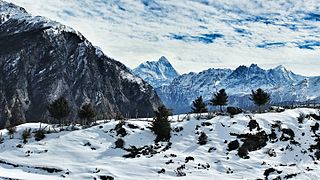
Uttarakhand, formerly known as Uttaranchal, is a state in northern India. The state is divided into two divisions, Garhwal and Kumaon, with a total of 13 districts. The winter capital and largest city of the state is Dehradun, which is also a railhead. On 5 March 2020, Bhararisain, a town in the Gairsain Tehsil of the Chamoli district, was declared as the summer capital of Uttarakhand. The High Court of the state is located in Nainital, but is to be moved to Haldwani in future.
BIMARU is an acronym, coined by demographer Ashish Bose in mid-1980s, formed from the first letters of names of some of poorest Indian states, namely Bihar, Madhya Pradesh, Rajasthan, and Uttar Pradesh. BIMARU in Hindi, bīmār (बीमार), denotes "sick" states referring to the poor economic conditions of these states. BIMARU states are low on HDI & food security. The present-day states of Chhattisgarh, Jharkhand and Uttarakhand were part of Madhya Pradesh, Bihar and Uttar Pradesh, respectively, when the BIMARU acronym was coined. All of these are in the Hindi Belt, which also has relatively richer non-BIMARU states, such as Haryana, Himachal Pradesh, Delhi, Chandigarh and Uttarakhand.
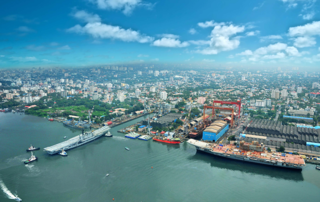
The economy of Kerala is the 9th largest in India, with an annual gross state product (GSP) of ₹9.78 lakh crore in 2020–2021. Per-capita GSP of Kerala during the same period is ₹257,711 (US$3,200), the sixth largest in India. In 2019–20, the tertiary sector contributed around 63% of the state's GSVA, compared to 28% by secondary sector, and 8% by primary sector.

The economy of West Bengal is a mixed middle-income developing social market economy and the largest Eastern Indian economy with a substantial public sector. It is the India's sixth-largest economy by nominal GDP.

Uttar Pradesh is the most populous state in India with a population of nearly 240 million people. The economy of Uttar Pradesh is the fifth largest among states in India. At current prices, the gross state domestic product (GSDP) of Uttar Pradesh is estimated to be Rs. 24.99 trillion in 2024–25. Merchandise exports from Uttar Pradesh reached US$21.03 billion in FY22.
Income in India discusses the financial state in India. With rising economic growth and prosperity, India's income is also rising rapidly. As an overview, India's per capita net national income or NNI was around 9.97 lakh rupees in 2022. The per-capita income is a crude indicator of the prosperity of a country. In contrast, the gross national income at constant prices stood at over 128 trillion rupees. The same year, GRI growth rate at constant prices was around 6.6 percent. While GNI and NNI are both indicators for a country's economic performance and welfare, the GNI is related to the GDP or the Gross Domestic Product plus the net receipts from abroad, including wages and salaries, property income, net taxes and subsidies receivable from abroad. On the other hand, the NNI of a country is equal to its GNI net of depreciation.

The economy of Bihar is one of the fastest-growing in India. It is largely service-based, with a significant share of agricultural and industrial sectors. The GDP of the state was ₹9,76,514 crores at the current market price (2024–25).

The economy of the Indian state of Andhra Pradesh is primarily dependent on agriculture, which directly and indirectly employs 62% of the population. GSDP as per the first revised estimate, for the year 2023-24 is ₹15,90,242 crore. The state is ranked 1st in the country for the year 2021-22 in terms of the Gross State Domestic Product (GSDP) growth at constant prices with growth rate of 11.43%.

The economy of Odisha is one of the fastest growing economies in India. According to 2014-15 economic survey, Odisha's gross state domestic product (GSDP) was expected to grow at 8.78%. Odisha has an agriculture-based economy which is in transition towards an industry and service-based economy.
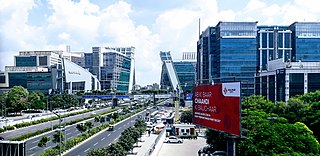
GSDP of Haryana state is estimated to be US$140 billion in 2023-2034 which had grown at 12.96% CAGR between 2012–17, boosted by the fact that this state on DMIC in NCR contributes 7% of India's agricultural exports and 60% of India's Basmati rice export, with 7 operational SEZs and additional 23 formally approved SEZs. Haryana also produces India's 67% of passenger cars, 60% of motorcycles, 50% of tractors and 50% of the refrigerators, which places Haryana on 14th place on the list of Indian states and union territories by GDP behind only much bigger states that are significantly larger in both area and population.
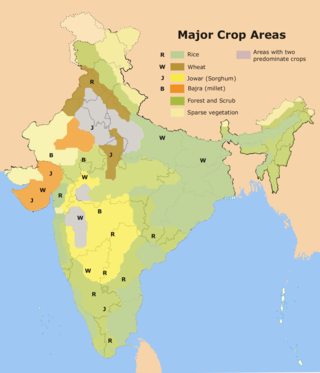
Rice production in India is an important part of the national economy.
The 2009 Union budget of India was presented by the finance minister, Pranab Mukherjee, on 6 July 2009.

Pakistan holds a significant position in the global rice market and is one of the leading rice-producing countries. The rice sector is crucial for the country's economy, providing livelihoods to a substantial portion of the population and contributing substantially to agricultural exports.
Mizoram is one of the fastest growing economies among the states of India with a per capital income of Rs 308571. Mizoram had the second highest GSDP growth during the 11th Five Year Plan (2007–2012) in Northeast India at 11% exceeding the target of 7.8% which is also much higher than the national average of 7.9%. During the 10th Five Year Plan (2002–2007), the Gross State Domestic Product (GSDP) was expected to grow at around 5.3% but grew at 5.7%. The biggest contributors to GSDP growth are agriculture, public administration and construction work. Tertiary sector of service sector continued to have the contribution to the GSDP with its share hovering between 58% and 60% during the past half a decade.
The Odisha State Budget for 2015–2016 was presented by Finance Minister of Odisha, Pradip Kumar Amat on 16 February 2015 in Odisha Legislative Assembly. Finance Minister Pradip Kumar Amat presented the Odisha Annual State Budget of ₹ 84,487.77 Crore with total revenue expenditure estimated at ₹ 65,838.99.
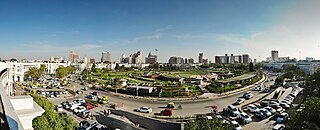
The economy of Delhi is the 13th largest among states and union territories of India. The Nominal GSDP of the NCR was estimated at 272.603 Billion and the Nominal GSDP of the NCT of Delhi for 2022-23 was estimated at ₹10.83 lakh crore (US$140 billion) recording an annual growth of 8.1%. Growth rate in 2014-15 was 9.2%. In 2020-21, the tertiary sector contributed 85% of Delhi's GSDP followed by the secondary and primary sectors at 12% and 3% respectively. The services sector recorded an annual growth of 7.3%. Delhi is the largest commercial centre in northern India. As of 2021, recent estimates of the economy of the urban area of Delhi have ranged from $370 billion and it has $272.603 billion as ranking it either the most or second-most productive metro area of India.
The Fourteenth Finance Commission of India was a finance commission constituted on 2 January 2013. The commission's chairman was former Reserve Bank of India governor Y. V. Reddy and its members were Sushma Nath, M. Govinda Rao, Abhijit Sen, Sudipto Mundle, and AN Jha. The recommendations of the commission entered force in April 2015; they take effect for a five-year period from that date.














